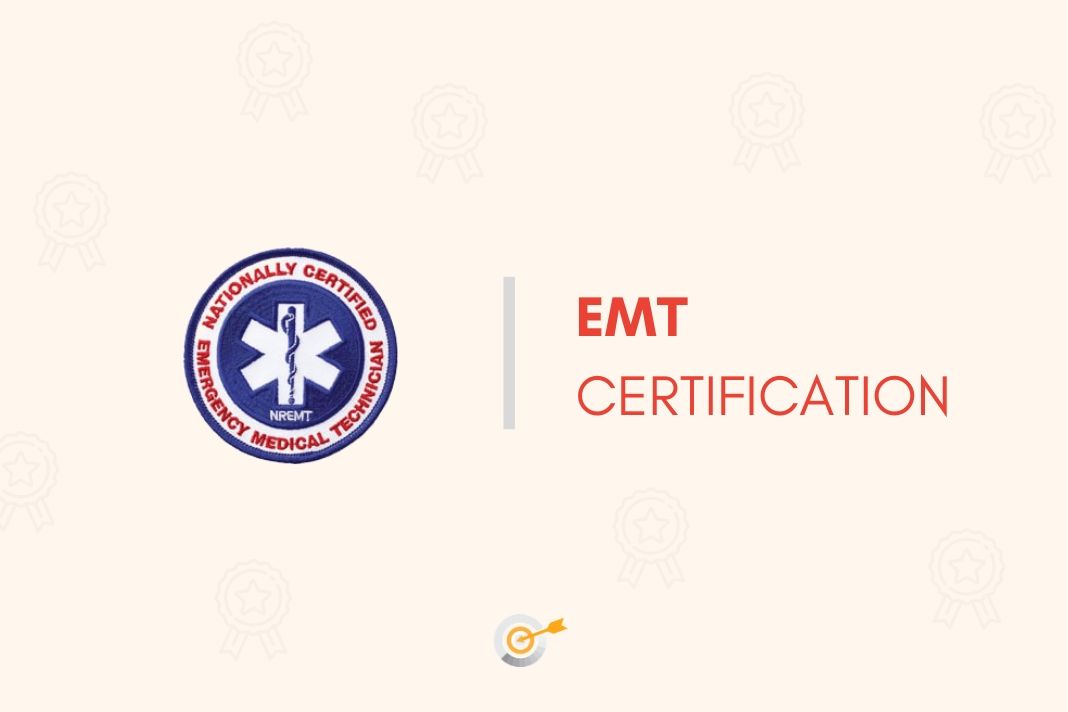
Overview of EMT Certification
Paramedics and EMTs work in a variety of capacities, including providing immediate medical treatment for sick and injured people in emergency situations and transporting patients to medical facilities. Emergency medical technicians respond to 911 calls and medical emergencies. EMTs transport patients to hospitals, perform basic medical tasks, and act as first responders. These professionals must work well under pressure to make life-saving decisions in high-stress environments.
EMTs work closely with other medical professionals, including paramedics, police, and firefighters. The responsibilities of an EMT depend on the professional’s education and training. Some first responders only administer basic care, while EMTs with more training can perform more complex medical procedures in the field and on the way to the hospital.
About the Certification
- Both EMTs and paramedics must obtain CPR certification. Organizations such as the American Red Cross and the American Heart Association regularly provide CPR training.
- EMTs and paramedics must also complete a postsecondary emergency medical technology program through a community college, technical college, or university. These programs last 1-2 years and teach students how to assess, care for, and transport patients.
- Aspiring paramedics then pursue a two-year associate degree in emergency medical services. These programs prepare learners to administer medications, insert IVs, and resuscitate patients.
EMTs and paramedics both need state certification to practice. Some states require a state-specific certification exam. However, most states accept the NREMT exam. To sit for the exam, candidates must have completed a state-approved training course within the last two years.
The NREMT exam comprises a cognitive test and a psychomotor portion. Candidates have six attempts to pass the cognitive exam and can reapply to take the cognitive exam 15 days after receiving their results. Candidates take the psychomotor exam through a state emergency services office or approved training site.
National EMS Certification assures the public, licensing officials, and employers that the EMS professional is competent. The National Registry of Emergency Medical Technicians® (National Registry) provides National EMS Certification for the United States.
Eligibility Criteria
Candidates must have completed the course within the past two years and the course Program Director must verify successful course completion on the National Registry website. They should Have a current CPR-BLS for “Healthcare Provider” or equivalent credential. For candidates to clear cognitive and psychomotor exams, passed portions of the cognitive and psychomotor exam remain valid for 24 months. Candidates must pay the application fee of $80 (US funds). The application fee is non-transferable and non-refundable. This fee is charged for each attempt of the cognitive examination.
If the initial Emergency Medical Technician (EMT) educational program was completed more than two years ago, and the candidate is currently state licensed at the EMT level, the candidate must document successful completion of a state-approved EMT refresher course or 24 hours of equivalent continuing education topic hours within the past two years. If the candidate is not currently state licensed as an EMT and it has been more than two years from the completion of an approved EMT course, the candidate must complete a new state-approved EMT course prior to applying for National Certification.
Also Read ;
How Much Can You Really Earn As an EMT ?
Expiration Dates
Initial expiration dates are determined by the date the candidate successfully completes the entire national certification process (cognitive and psychomotor exams). EMT, AEMT, and Paramedic candidates completing the national certification process between January 1 and June 30 will receive an expiration date of March 31 two years in the future. Individuals successfully completing the national certification process between July 1 and December 31 will receive an expiration date of March 31 three years in the future. Detailed information about the recertification process for Emergency Medical Technicians is on the EMT Recertification Page(1).
Cognitive Exam Test Plan
Based on the most recent practice analysis, the National Registry Board approves a cognitive exam test plan. A test plan is a blue-print that tells the computer testing software how to build a candidate’s exam. The table below indicates what percent of the test will focus on each topic area.
| Content Area | Percent of Exam | Adult / Pediatric Mix |
| Airway, Respiration & Ventilation | 18%-22% | 85% Adult; 15% Pediatric |
| Cardiology & Resuscitation | 20%-24% | 85% Adult; 15% Pediatric |
| Trauma | 14%-18% | 85% Adult; 15% Pediatric |
| Medical; Obstetrics & Gynecology | 27%-31% | 85% Adult; 15% Pediatric |
| EMS Operations | 10%-14% | N/A |
Psychomotor Exam
Your instructor must attest that you have demonstrated competence in the following skills during your course: patient assessment/management of a trauma patient, patient assessment/ management of a medical patient, cardiac arrest management/AED, BVM ventilation of an apneic patient, long bone fracture immobilization, joint dislocation immobilization, traction splinting, bleeding control/shock management, upper airway adjuncts and suction, mouth-to-mouth ventilation with supplemental oxygen, and supplemental oxygen administration to a breathing patient.
Emergency Medical Technician psychomotor examinations are not administered by the National Registry. All EMT psychomotor exams are administered by either the State EMS Office or at the training institution (with approval and oversight provided by the State EMS Office)
[ Read: Guide to Become a Medical Transcriptionist ]
Where to Get Online Resources for the EMT Certification?
In most cases, as per the requirements, the states designate providers that will provide the required training and conduct the exams. States also have separate departments that administer EMT licensing. The National Registry organizes exams for the other aspects of the certification.




